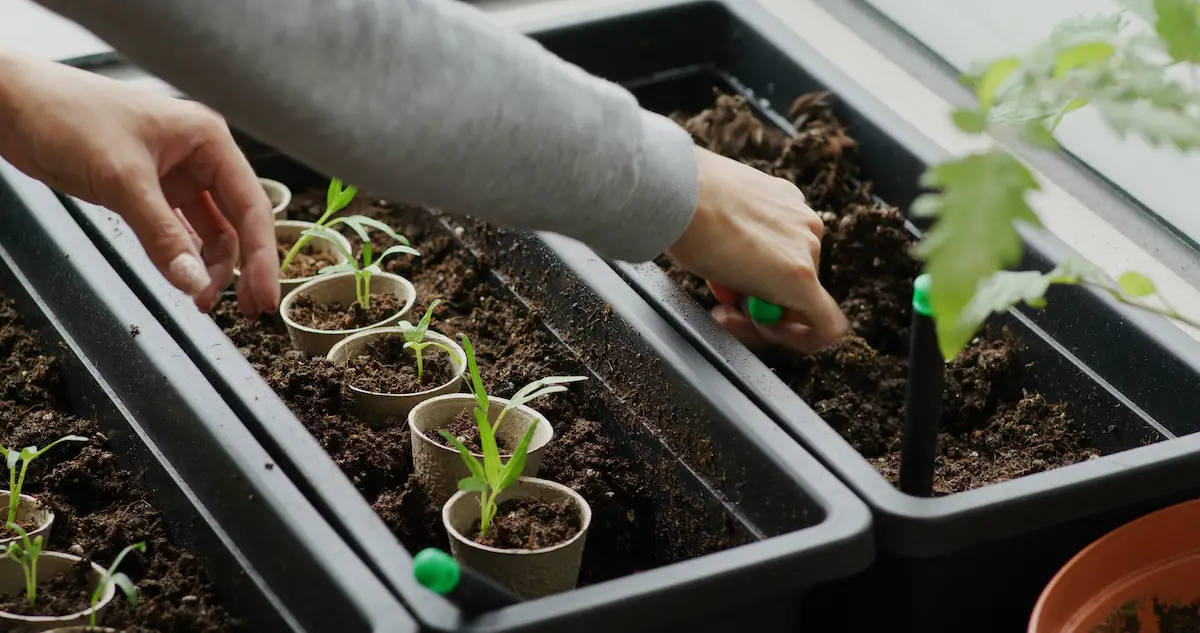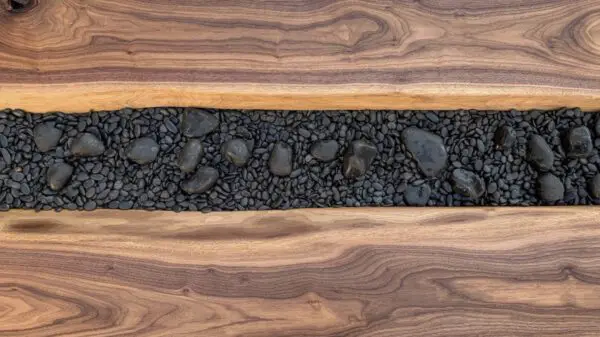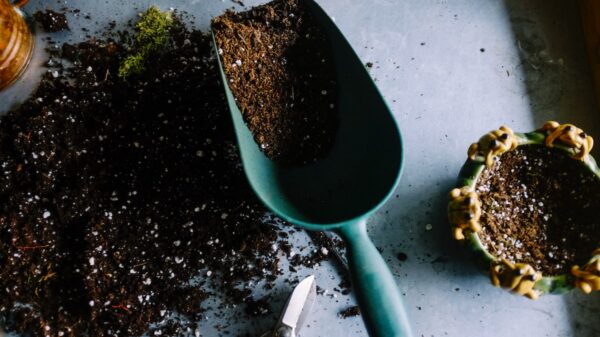Best Soil and Fertilizers for Growing Herbs in a Microgarden
If you’re passionate about gardening and want to grow herbs in a microgarden, it’s essential to understand the importance of using the right type of soil and fertilizer.
Proper soil composition and nutrient supply play a crucial role in the growth and development of herbs, ensuring they thrive and provide you with a bountiful harvest.
In this comprehensive guide, we’ll explore the ideal soil types, suitable fertilizers, and expert tips to help you achieve success in growing herbs in your microgarden.
The Importance of Soil for Growing Herbs
Good soil is the foundation of a healthy herb garden. It provides plants with essential nutrients, water drainage, and root aeration. When it comes to microgardening, the soil you choose can make a significant difference in the overall growth and flavor of your herbs.
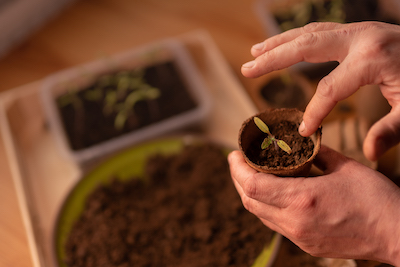
Choosing the Right Soil Type
The first step in creating an ideal growing environment for your herbs is selecting the right soil type. Here are a few options to consider:
- Potting Mix: Potting mix is a popular choice for microgardens due to its lightweight and well-draining properties. It typically consists of a blend of organic matter, peat moss, vermiculite, and perlite, providing a balanced environment for herb growth.
- Garden Soil: If you prefer using soil from your garden, it’s important to ensure that it’s well-draining and rich in organic matter. You can enhance garden soil by adding compost or well-rotted manure to improve its fertility.
- Coconut Coir: Coconut coir, derived from coconut husks, is an environmentally friendly alternative to peat moss. It retains moisture well and promotes aeration, making it suitable for microgardening.
Soil Amendments for Optimal Herb Growth
To enhance the soil’s fertility and provide the necessary nutrients to your herbs, consider incorporating the following amendments:
- Compost: Adding compost to your soil improves its structure, water-holding capacity, and nutrient content. Compost is a rich source of organic matter and beneficial microorganisms that promote plant health.
- Worm Castings: Worm castings, or vermicompost, are a nutrient-dense amendment that enhances soil fertility. They contain a balanced blend of macronutrients, micronutrients, and beneficial microbes that support herb growth.
- Organic Fertilizers: Organic fertilizers, such as fish emulsion, seaweed extract, and bone meal, are excellent choices for microgardens. They provide slow-release nutrients and help maintain a healthy soil ecosystem.
Choosing the Right Fertilizer
While nutrient-rich soil is essential, herbs also benefit from periodic fertilization to ensure optimal growth and flavor. Here are some factors to consider when selecting a fertilizer for your microgarden:
Understanding NPK Ratios
Fertilizers contain three main nutrients: nitrogen (N), phosphorus (P), and potassium (K), represented by their respective NPK ratios. These ratios indicate the percentage of each nutrient present in the fertilizer. The ideal NPK ratio for herbs varies depending on the growth stage. For example:
- Young Seedlings: A balanced fertilizer with an equal NPK ratio, such as 10-10-10, provides essential nutrients for young herb seedlings.
- Vegetative Growth: During the vegetative growth stage, a higher nitrogen content, such as 20-10-10, promotes leafy growth.
- Flowering and Fruit Production: When herbs start flowering, a fertilizer with a higher phosphorus and potassium content, such as 5-10-10, encourages bloom development and enhances fruit production.
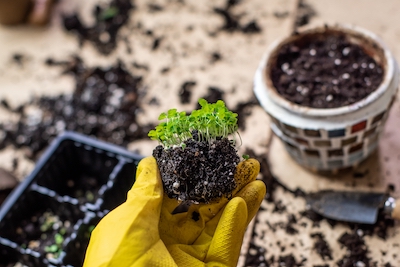
Organic vs. Synthetic Fertilizers
Both organic and synthetic fertilizers have their advantages and considerations. Organic fertilizers are derived from natural sources and provide slow-release nutrients that nourish plants over time. They improve soil structure and microbial activity, promoting a healthy growing environment.
On the other hand, synthetic fertilizers provide an immediate nutrient boost but may lack the long-term soil-building benefits of organic alternatives. It’s best to choose a fertilizer that aligns with your gardening philosophy and the needs of your herbs.
What Herbs Grow Best In a Microgarden?
When it comes to growing herbs in a microgarden, there are several varieties that thrive in small spaces and provide an abundance of flavors and aromas. Here are a few herbs that are well-suited for microgardens:
Basil
Basil is a popular herb known for its fresh and vibrant taste. It grows well in microgardens, and its compact size makes it an excellent choice for small spaces. Basil varieties like Genovese and Thai basil are particularly well-suited for microgardens.
Chives
Chives are versatile herbs that add a mild onion-like flavor to dishes. They are compact, easy to grow, and their slender green leaves make a lovely addition to any microgarden. Chives also produce delicate purple flowers, adding beauty to the garden.
Mint
Mint is a hardy herb that grows vigorously in microgardens. It spreads quickly, so it’s best to plant it in a container to prevent it from taking over the garden. Mint varieties like spearmint and peppermint are commonly grown for their refreshing aroma and taste.
Parsley
Parsley is an essential herb in many cuisines, known for its bright green leaves and fresh flavor. It grows well in microgardens and can be easily harvested as needed. Flat-leaf parsley is favored for its robust flavor, while curly-leaf parsley adds an attractive texture to the garden.
Thyme
Thyme is a low-growing herb with small, aromatic leaves that add a savory touch to dishes. It thrives in microgardens and can tolerate dry conditions. Thyme varieties like English thyme and lemon thyme are popular choices for their distinct flavors.
Cilantro
Cilantro, also known as coriander, is a versatile herb commonly used in Mexican, Indian, and Asian cuisines. It grows well in microgardens and produces flavorful leaves that are often used fresh. Cilantro can bolt quickly in hot weather, so regular harvesting is essential to promote continuous growth.
These are just a few examples of herbs that grow exceptionally well in microgardens. Remember to provide them with the right soil, adequate sunlight, and regular watering to ensure healthy and productive growth.
With a little care and attention, you can enjoy a thriving microgarden filled with an array of aromatic herbs.
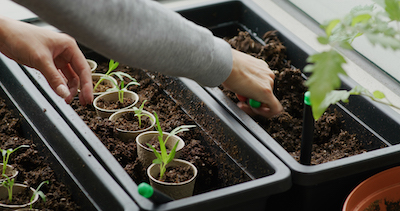
Conclusion
Growing herbs in a microgarden can be a rewarding and enjoyable experience. By selecting the right soil type, incorporating organic amendments, and choosing suitable fertilizers, you can create an optimal environment for your herbs to thrive.
Remember to consider the growth stage of your herbs when selecting the NPK ratios and choose fertilizers that align with your gardening principles. By providing the right soil and nutrients, you’ll be well on your way to enjoying a bountiful harvest of flavorful herbs from your microgarden.
Frequently Asked Questions
Can I reuse the soil in my microgarden for multiple growing seasons?
Yes, you can reuse the soil in your microgarden for multiple growing seasons. However, it’s important to replenish the nutrients by adding compost or organic fertilizers before each new planting season. This ensures that the soil remains fertile and provides the necessary nutrients for your herbs’ growth.
How often should I fertilize my herbs in a microgarden?
The frequency of fertilization depends on the type of fertilizer you’re using. Organic fertilizers usually require application every four to six weeks, while synthetic fertilizers may require more frequent applications.
Always follow the manufacturer’s instructions for the specific fertilizer you choose and monitor your herbs’ growth to determine if additional fertilization is needed.
Can I use chemical fertilizers for growing herbs in a microgarden?
While chemical fertilizers can provide a quick nutrient boost, they are not recommended for microgardens, especially if you plan to consume herbs.
Chemical fertilizers can have negative impacts on the environment and may leave residual chemicals in the plants. Organic fertilizers are a safer and more sustainable choice for growing herbs in a microgarden.
Are there any natural alternatives to fertilizers for herb growth?
Yes, there are natural alternatives to fertilizers that can promote herb growth. One example is the use of compost tea, which involves steeping compost in water to create a nutrient-rich liquid fertilizer.
Other options include seaweed extracts, fish emulsion, and bone meal. These natural alternatives provide beneficial nutrients while nourishing the soil and supporting a healthy microgarden ecosystem.
Can I grow herbs in a hydroponic microgarden?
Yes, herbs can be grown successfully in a hydroponic microgarden. Hydroponics is a soilless growing method that relies on nutrient-rich water solutions to provide essential nutrients directly to the plant roots.
This allows for precise control over the nutrient levels and ensures optimal herb growth in a microgarden.
How can I prevent over-fertilization of herbs in a microgarden?
Over-fertilization can be detrimental to herb growth and may lead to nutrient imbalances or plant burn. To prevent over-fertilization, carefully follow the instructions on the fertilizer package and avoid applying more than the recommended amount.
Regularly monitor your herbs’ growth and adjust the fertilization frequency and dosage accordingly.


